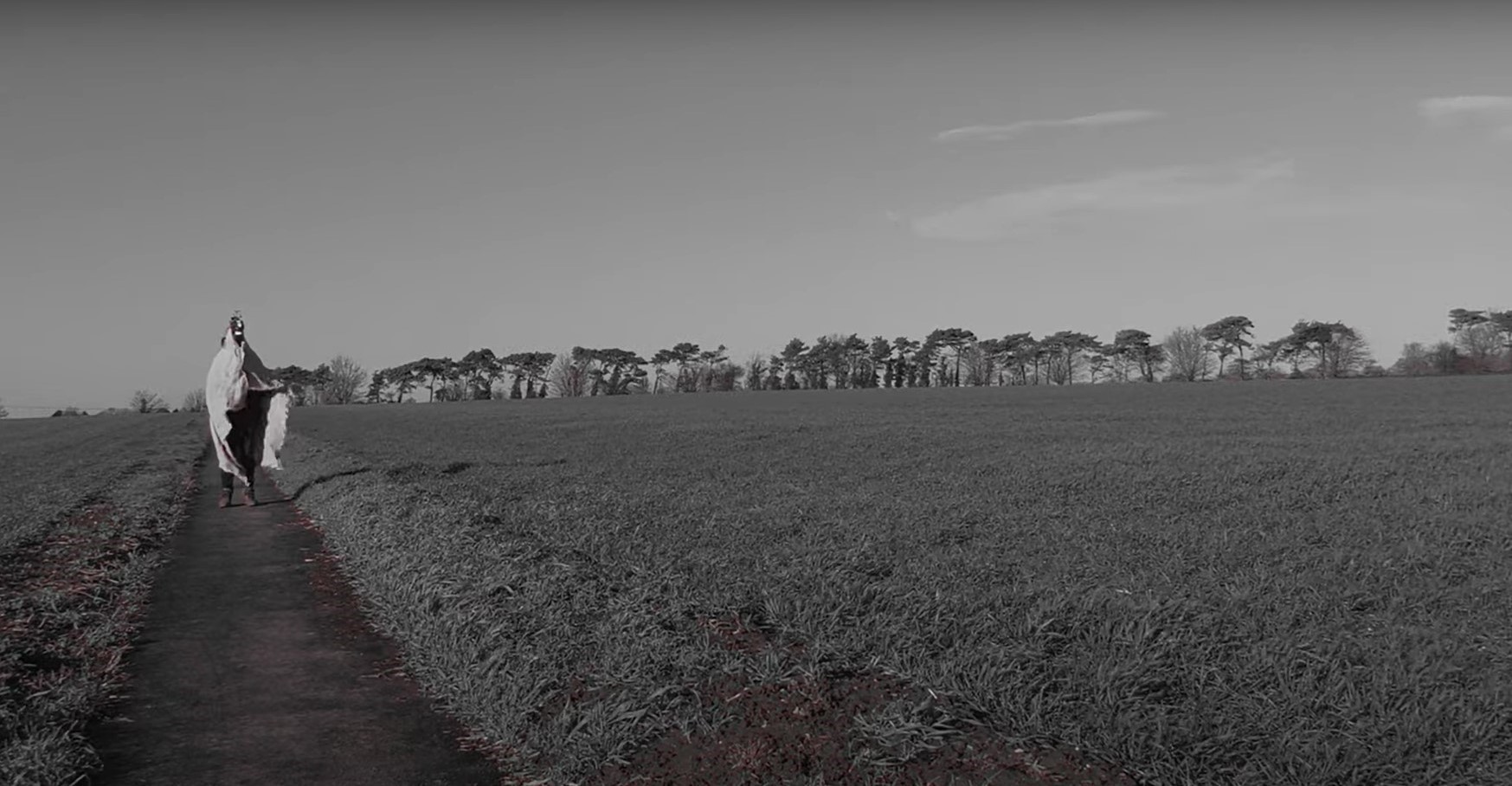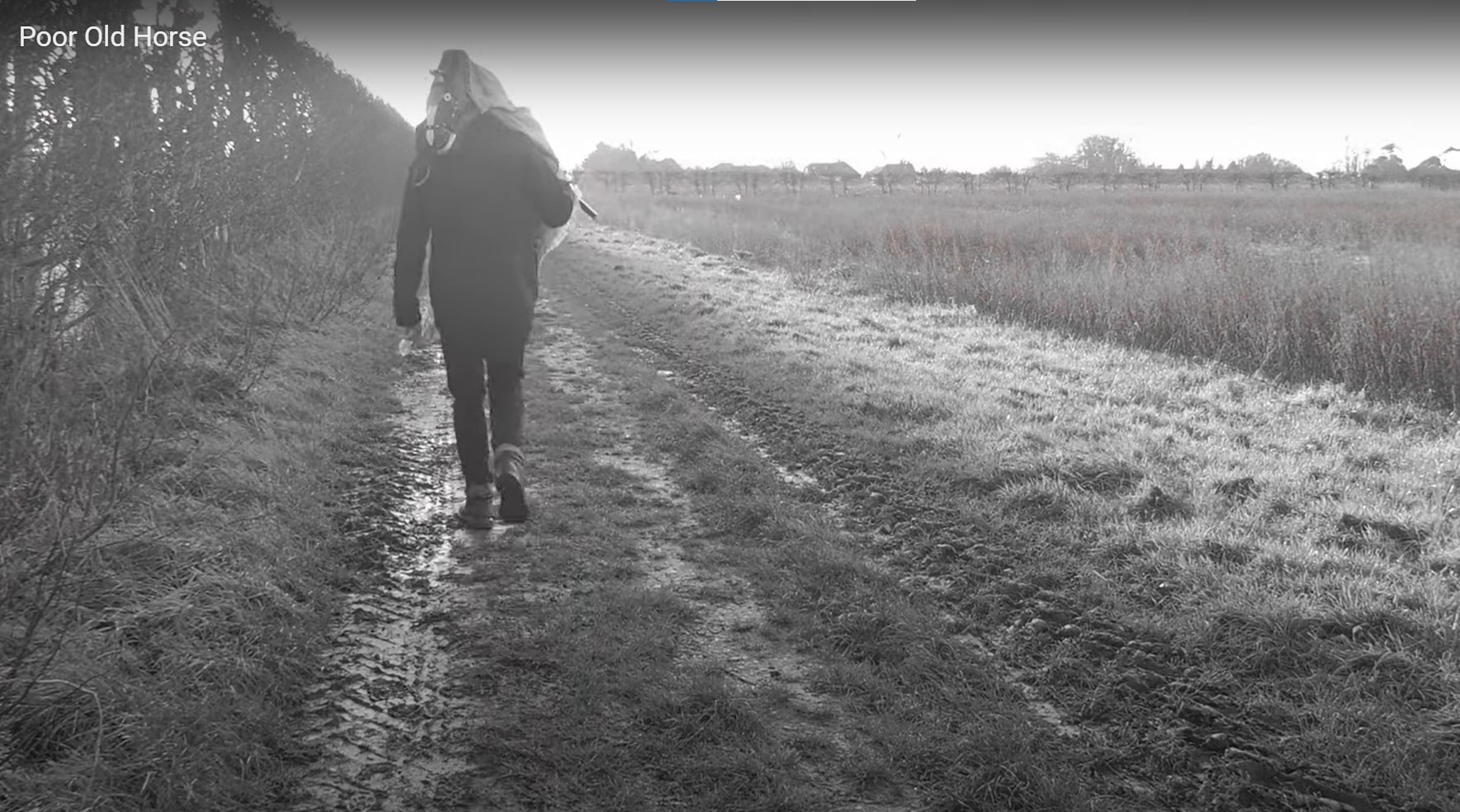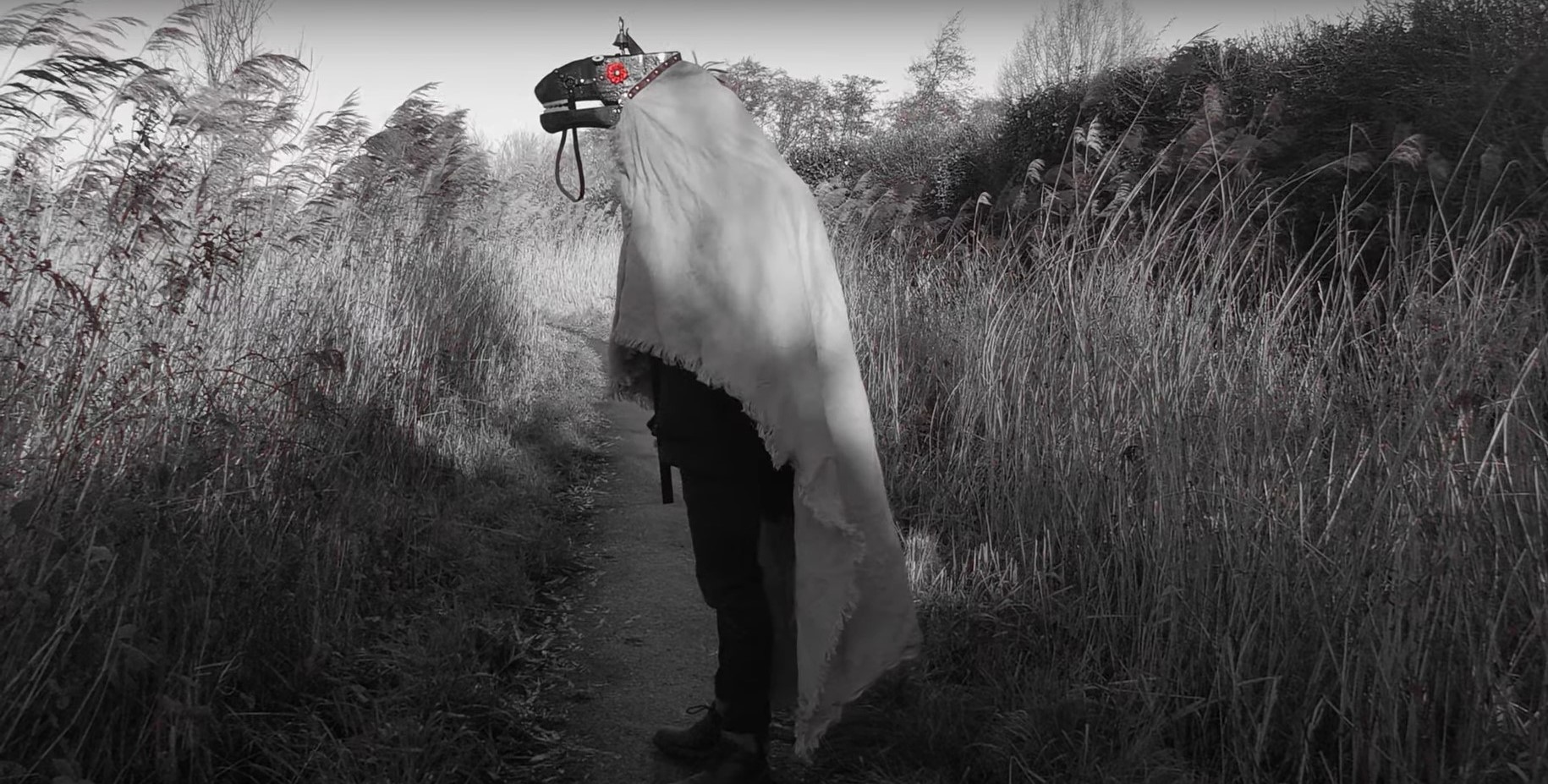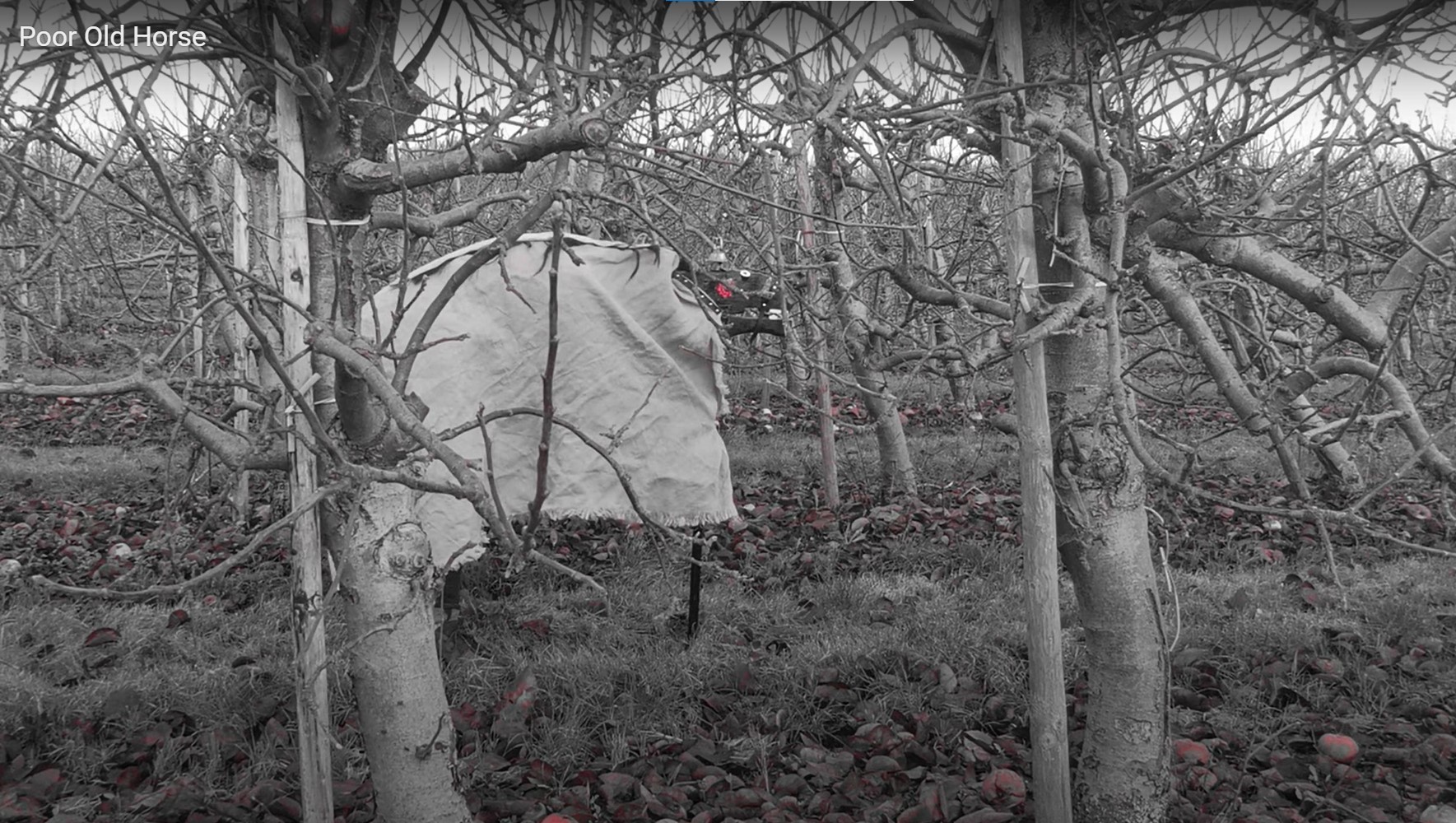Poor Old Horse is a film commissioned for the research project ‘Celebrating the Kentish Hooden Horse’ and the connected national exhibition, ‘Animal Guising and the Kentish Hooden Horse’, with support from Arts Council England, National Lottery for heritage and Canterbury Christ Church University.
The piece explores the relationship of the Hoodening custom to the landscape of its origin through walking and embodied experience, spoken word, and the re-visioning of archival material and traditional music.
It was filmed on location in East Kent in January 2023 and screened in the exhibition from February – June 2023.
The piece can now be viewed online here: https://www.youtube.com/watch?v=yg6BbVp4Erw
Credits
Words written and spoken by Sonia Overall
Hooden Horse performed by James Frost
‘Poor Old Horse’ Sea Shanty sung by Geoff Doel
Tom West voiced by Tony Cooper
Musicians
David Batchelor: percussion
Gerry O’Brien: fiddle
Sonia Overall: recorders, tin whistle, bells
Carol Partridge: hurdy gurdy, concertina, recorder
Filmed, directed and edited by Sonia Overall









One thought on “Poor Old Horse”